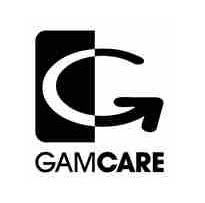Omaha Is A High-Variance Game, Make Sure Your Bankroll Can Withstand The PLO Swings!
Correctly managing your poker bankroll is an essential, yet much overlooked skill for all profitable poker players. The high ‘variance’ involved in optimal Omaha play makes this even more important for those who enjoy Omaha poker. This article outlines the basics of good Omaha poker bankroll management for players of different types of Omaha poker, including PLO cash games, omaha tournaments, sit n goes and fixed-limit games too.
We start by outlining the concept of variance and why this is inherently larger in Omaha games. Next we look at each of the game varieties in turn, suggesting bankroll management guidelines for each. Finally we will bring individual characteristics and factors into the discussion.
Variance And Bankroll Management
The best way to understand why variance is greater in pot-limit Omaha is to picture the classic scenario of a made hand against a draw on the flop. For arguments sake we will make these hands 50 / 50 to win the pot. With raises and re-raises from a few players pre-flop the pot has grown to $100, you raise your last $100 with a strong draw and an opponent with a made hand correctly calls.
In this situation both players have made the ‘correct’ move, you bet your draw for value, with a 50% chance of winning the pot your equity exactly equaled your risk… the chance of your oppoent folding making this a +ev play.. Your opponent, suspecting he was at least 50% to win had to call $100 to win $200 – also a positive expectation move over time. Yet only one player will win the pot – the swing for either you or an opponent will be + or – $200.
Important Note: Make sure you know where to find the most profitable PLO games – it can and will make a big difference to your bankroll. See our Omaha Poker Sites section for more.
Due to the close rank of starting hands there will be many situations like this one, and still more where your opponents hand is way ahead or way behind. The chance deal of the cards mean you will win money over time by betting, yet at the same time will increase your short-term swings.
To counter these swings we need to use some bankroll management. Omaha games are volatile – yet very profitable for the thinking player over time. If too much of your poker bankroll is in the table and at risk in a single hand then there is a very real chance that ‘correct’ play will actually cause you to go broke!
The question then becomes how should we organize our Omaha Poker bankroll to strike the right balance between making a profit and avoiding going broke? This will primarily depend on the form of the game you are playing, with secondary factors such as your individual playing style and ability to re-load your poker account easily also having an effect.
Pot-Limit Omaha (High and Hi-Lo) Cash Games
In Pot-limit games your variance is high (as outlined) a buffer is certainly required to prevent a bad run of cards leaving you broke. The suggestion is that you keep at least 30 buy-ins for the level at which you play, this is compared to the suggested 20 for Holdem games. Having 3% to 4% of your bankroll at risk in any one situation will ensure that you can profit over time – after all it is over a large number of hands that your skill difference will have time to manifest itself. Professional players are advised to increase this amount to between 40 and 50 buy-ins.
Fixed-Limit Omaha (High and Hi-Lo)
For fixed limit games bankrolls are measured in ‘big bets’ instead of buy-ins. These are the double sized bets after the turn has been dealt. In fixed limit Omaha games you will usually have the odds to call, even if there is as high as an 80% chance you are behind. This creates real volatility in your results – meaning that the ‘300 big-bet’ rule should be used to protect your bankroll.
Omaha Tournaments / Sit N Goes
Tournament play in any form of poker is considered the most volatile of all. Even proven winning players will sometimes go for long stretches without a significant cash. The reason for the higher variance is that you need to ‘play to win’ in Omaha Tournaments . Cashing for double your buy-in will simply not make up for the times you lose a big-hand early on and fail to reach the money at all. Tournament players are advised to keep at least 50 ‘average buy-ins’ and possibly more for larger field tournaments.
Individual Factors In Omaha Poker Bankroll Management
Factors such as your reason for playing, ability to re-load and individual playing style all affect the Omaha Bankroll Management guidelines outlined above. Someone who plays for leisure and profit would not necessarily require the same Omaha Bankroll as an online poker professional. For the former player type it is possible to avoid many high-risk situations and may be possible to reload should the cards turn bad. For a pro who relies on poker income going broke would be a disaster – stricter bankroll management criteria should be used.
A loose and aggressive Omaha player may take the most money from the tables over time. However their natural variance will be high even for Omaha. Bankroll management guidelines should again be stricter than those outlined. Conversely a tight and solid player need not keep the same number of big bets or buy-ins in their bankroll.
To summarize, close hand ranks and the significant role played by drawing hands make Omaha a naturally high-variance poker game. To counteract this expert players use bankroll management to avoid the risk of going broke. Your exact criteria for Omaha poker bankroll management will depend on the types of games you play and your individual characteristics.




